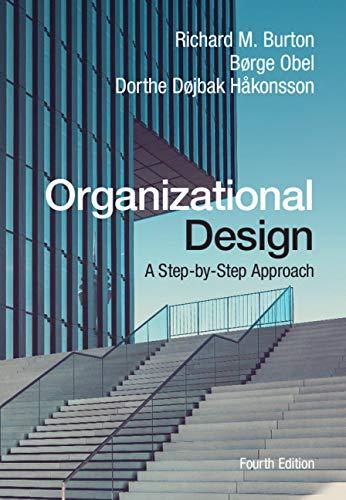Readiness for change activation emotions a. To what extent do people prefer old ways of thinking
Question:
Readiness for change – activation emotions
a. To what extent do people prefer old ways of thinking and doing things (1) versus embrace new ways of thinking and doing things (5)?
b. To what extent do people tend to shift direction or adjust their work habits to meet new, unanticipated challenges, low (1) or high (5)? LO5
c. Overall, what is the organization’s level of readiness to change, low (1) or high (5)?
Score your organization on a scale from 1 to 5 as follows:
1 2 3 4 5 very low moderate very high There are different types of data that may be relevant to assess these three questions. First, secondary data – for example, related to the internal mobility rate and/or turnover rates of employees – can be relevant. If the internal mobility is low, this may reflect a low degree of readiness for change. If there is a low internal mobility rate combined with a low turnover rate of people, this will indicate even further low readiness for change. Second, you may gain useful information simply from careful observation of employees’ reactions to normal workday events. Third, if possible, you may also want to conduct interviews with a number of relevant employees. Especially for climate assessments, private interviews may bring to the surface important elements that are not contained in official documents. Finally, you may want to conduct small experimental games with employees that can enable a good evaluation of people’s reactions to change.
Step by Step Answer:

Organizational Design A Step By Step Approach
ISBN: 9781108493284
4th Edition
Authors: Richard M. Burton, Børge Obel, Dorthe Døjbak Håkonsson





